Recent Articles
Popular Makes
Body Types
10 Subaru Outback Competitors to Consider

2018 Subaru Outback front quarter driving ・ Photo by Subaru
The original Subaru Outback was the first modern off-road station wagon, introduced in 1995 (with ads featuring Paul Hogan of "Crocodile Dundee" fame) to create an alternative to the growing SUV competition — and to help stave it off.
Starting at $25,895, the current model has 8.7 inches of ground clearance and either a 175-horsepower four-cylinder boxer engine (rated at 28 miles per gallon in mixed driving) or a 256-horsepower six-cylinder boxer engine (22 mpg combined). Inside it has 35.5 cubic feet of cargo volume with the seats up and 73.3 with the seats down. Does all that make it a winner? To help you decide, the editors at Autobytel have created a list of 10 Subaru Outback competitors to consider.
2019 Acura RDX
The compact Acura RDX crossover has been redesigned for the 2019 model year, and as you’d expect from a luxury vehicle, its starting price of $39,300 for an all-wheel drive model is more expensive than the Subaru Outback. The RDX has less cargo space than the Outback: 29.5 cubic feet behind the rear seat and 58.9 cubic feet with the seats folded down, but passenger volume is very similar.
You also get a competitive 8.2 inches of ground clearance, good handling, and a fun 272-horsepower turbocharged four-cylinder engine that’s good for a combined rating of 24 miles per gallon — which isn’t bad considering the power it provides but can’t quite match some of the other models on our list.
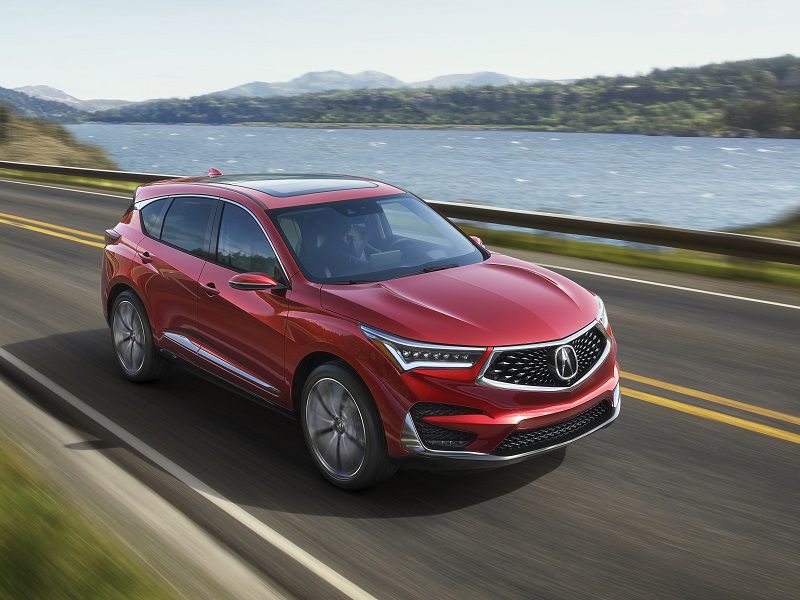
Photo by Acura
2018 Audi A4 Allroad
The Audi A4 allroad is another off-road wagon. The allroad nameplate first appeared in North America in 2001, and the current A4 allroad is powered by a 252-horsepower turbocharged four-cylinder with a combined fuel economy rating of 25 miles per gallon.
The allroad is smaller inside than the Outback, particularly in the back seat, where rear passengers get only 35.7 inches, and in cargo volume, where it offers 24.2 cubic feet with the rear seat up and 58.5 with it folded flat. It’s also lower than the Outback, providing just 6.5 inches of ground clearance, and with a starting price of $44,500, it’s significantly more expensive too. Positives include a dual-clutch transmission, fun handling, and a high-quality Audi interior.
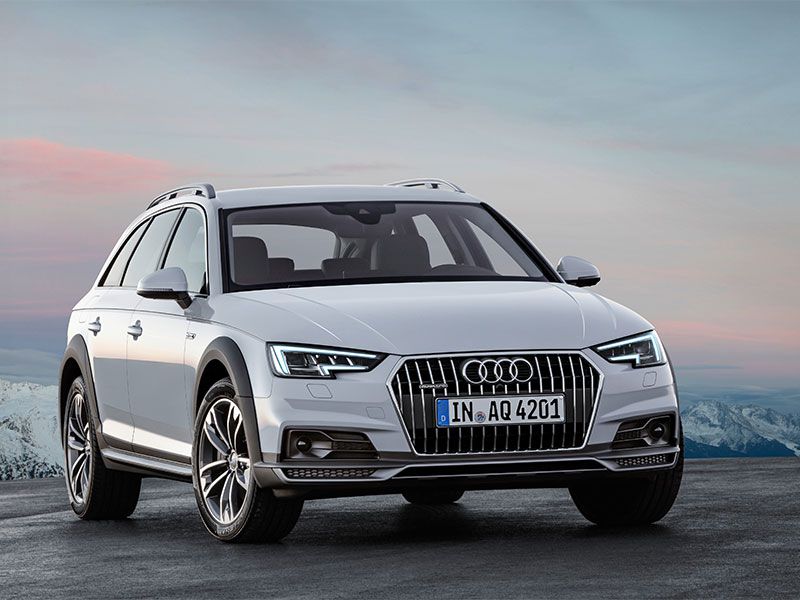
Photo by Audi
2018 Ford Escape
The Ford Escape is one of the more popular compact crossovers to go up against the Subaru Outback. You’ll have to pay at least $27,050 for an all-wheel drive Escape, and with a combined fuel economy rating of between 23 and 24 miles per gallon for the 245- and 179-horsepower turbocharged four-cylinder engines, respectively, fuel economy is a mixed bag.
With 7.9 inches of ground clearance, the Escape sits closer to the ground than the Subaru, and its passenger compartment is also just a touch smaller. On the other hand, it does almost match the Outback in terms of cargo space, it handles well, and it’s fun to drive — and it’s plenty quick when equipped with the more powerful engine.
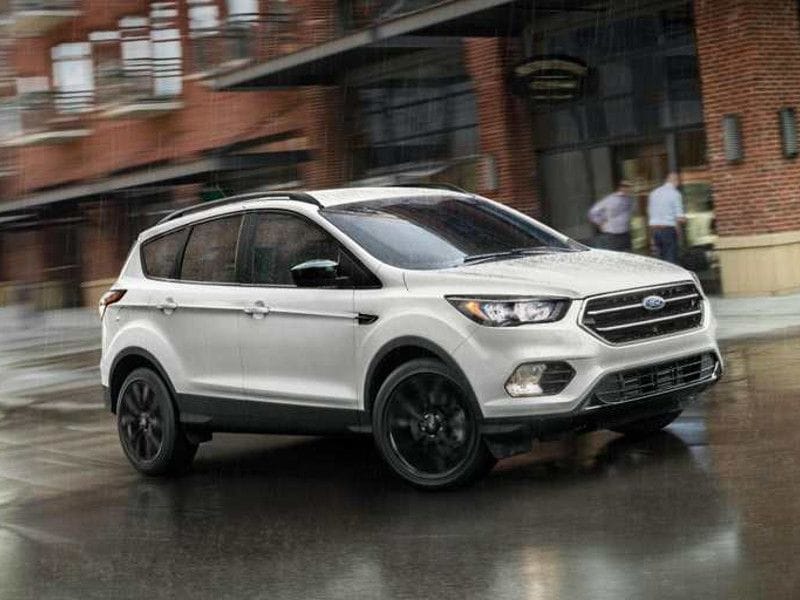
Photo by Ford
2018 Honda CR-V
The Honda CR-V is one of the roomier compact crossovers, with more cargo space than the Outback at 39.2 cubic feet with the rear seat up and 75.8 cubic feet with it down, as well as similar passenger volume. It is slightly lower off the ground than the Outback, offering 8.2 inches of ground clearance, and it can’t quite match the Subaru when the going gets rough.
With a starting price of $25,650 for an all-wheel-drive model, the CR-V is slightly less expensive than the Outback and matches its fuel economy as well, with combined ratings of 27 or 29 miles per gallon, depending on whether you go for its 184-horsepower naturally aspirated engine or its 190-horsepower turbo.
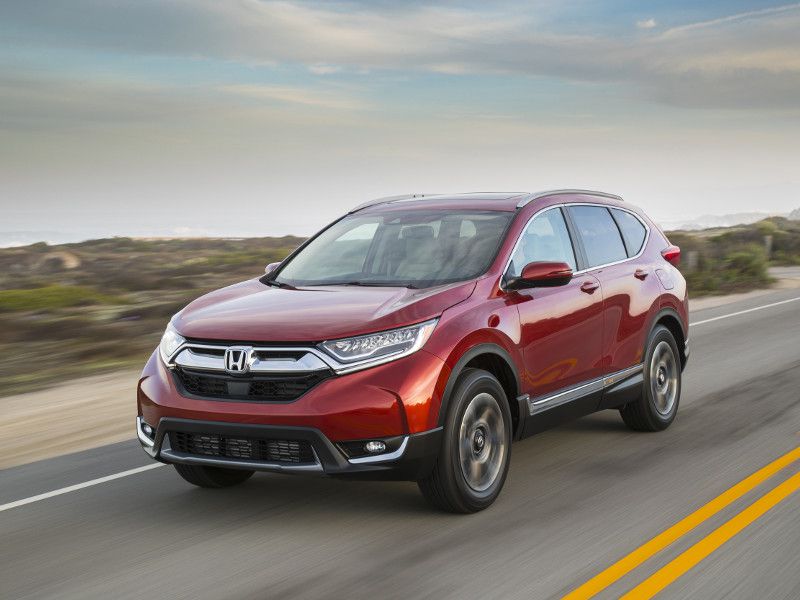
Photo by Honda
2018 Mazda CX-5
If you’re considering the Subaru Outback because you’re looking for an SUV that drives like a car, the compact Mazda CX-5 is also worth taking for a spin. Its starting price of $25,450 for an all-wheel drive model is competitive, and power comes from a peppy 187-horsepower four-cylinder engine that’s good for a combined rating of 26 miles per gallon.
At only 7.5 inches, the CX-5 has less ground clearance than the Outback, and it’s tighter in most interior measurements, though it does offer more rear legroom. Cargo space is slightly less than in the Outback with the rear seat in use at 30.9 cubic feet, and considerably less with the seat down at only 59.6 cubic feet.
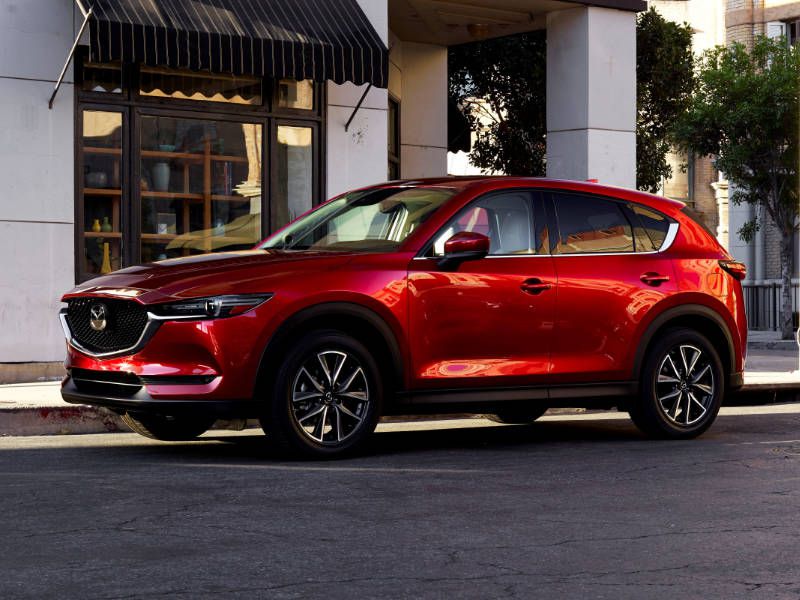
Photo by Mazda
2018 Mini Clubman
You might initially mistake the Clubman for any old Mini, but on second glance it’s clearly longer and taller than the normal model. Still, the Clubman is down on space compared to the Outback, with only 34.3 inches of rear legroom, 17.5 cubic feet of cargo space behind the rear seat, and 47.9 cubic feet with it folded. It’s also lower to the ground than the Outback, offering just 6.3 inches of ground clearance.
The starting price for an ALL4 all-wheel drive model is $26,900, and fuel economy ranges from 24 to 26 miles per gallon in the EPA's combined cycle, depending on whether you go for the 134-horsepower turbocharged three-cylinder engine or 189-horsepower or 228-horsepower turbocharged four-cylinder.
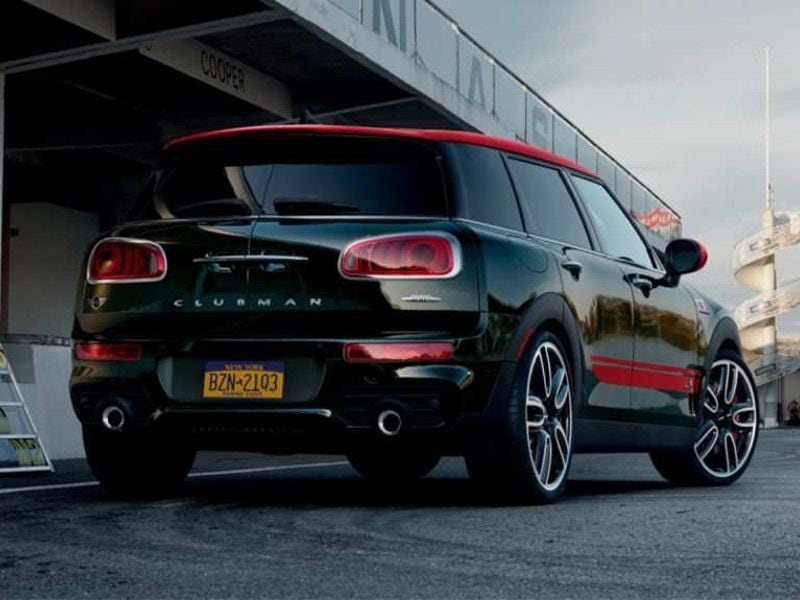
Photo by MINI
2018 Porsche Macan
The Porsche Macan has a steep entry price of $47,800, but it is the sportiest and best driving of the Subaru Outback competitors you should consider, despite having a reasonable 7.5 inches of ground clearance. Aside from the price, the Macan's downside is a lack of passenger and cargo space, with only 35.6 inches of rear legroom and just 17.7 cubic feet of cargo space with the rear seat in place and 53 cubic feet with it lowered.
Entry-level Macans come with a 252-horsepower turbocharged four-cylinder engine that’s good for 22 miles per gallon in the combined cycle, but models with up to 440 horsepower are available (though fuel economy drops to a somewhat pitiful 19 mpg combined).
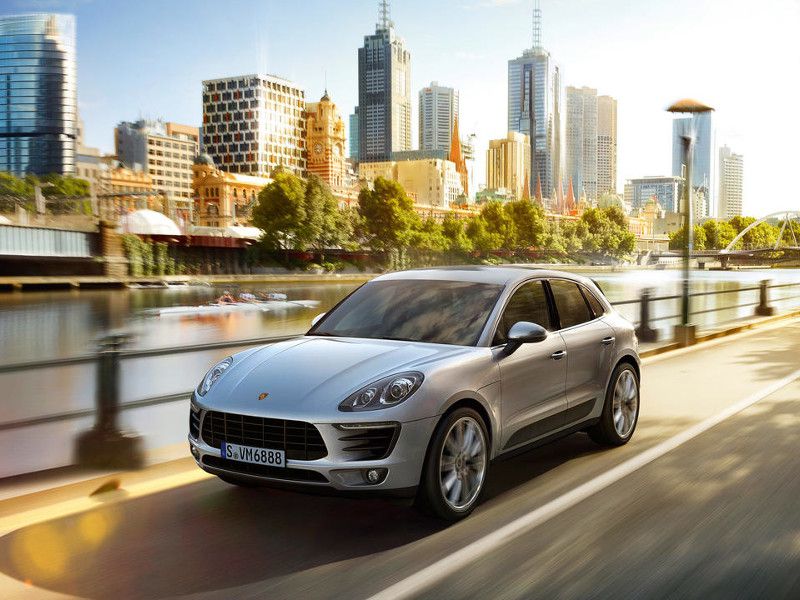
Photo by Porsche
2018 Subaru Forester
The Forester is Subaru’s compact SUV, and it’s only a little bit smaller than its larger sibling the Outback, with very similar interior volumes. The Forester has more of a traditional crossover design with a taller roof and higher driving position than the Outback, though ground clearance is the same for both at 8.7 inches.
Fuel economy is also similar, as the Forester has combined ratings of 24 to 28 miles per gallon, depending on whether you go for the 170-horsepower naturally aspirated four-cylinder or the 250-horsepower turbocharged unit. Where the Forester wins out is with its lower starting price of $22,795, the availability of a manual transmission, and its lower curb weight that makes it slightly quicker than the Outback.
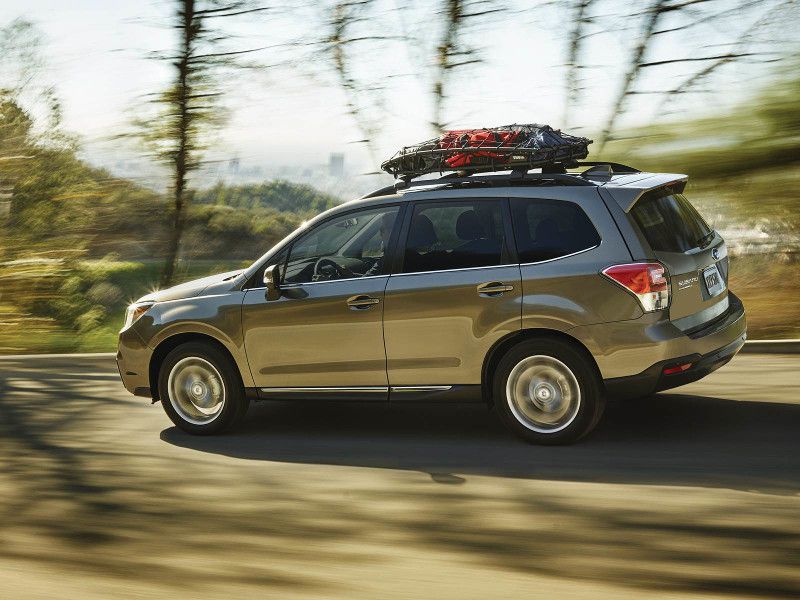
Photo by Subaru
2018 Volkswagen Golf Alltrack
Volkswagen has long been making off-road versions of its cars, with off-road versions of the original Beetle (the Type 87) and second-generation Golf (the Golf Country) being some of the more interesting attempts. The 2018 Golf Alltrack is the company’s latest attempt in this segment, but despite its rugged looks and lifted stance, it provides only 6.65 inches of ground clearance.
The Alltrack also only manages 25 miles per gallon combined from its 170-horsepower turbocharged four-cylinder engine, and there’s less room for cargo than in the Outback. On the other hand, its $25,955 starting price is very competitive with the Outback, and the Golf drives a bit better than the Subaru — at least when you’re on asphalt.
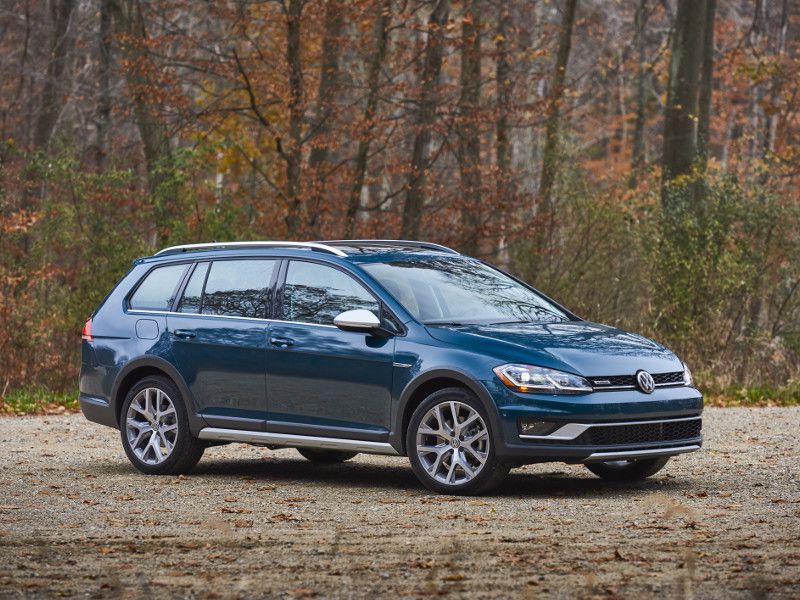
Photo by Volkswagen
2018 Volvo XC60
Volvo started its line of off-road wagons in the 1998 model year with the introduction of the V70 Cross Country (also known as the V70 XC), and today's XC60 crossover continues in that tradition. With 8.5 inches of ground clearance, this premium compact crossover is up there with the best on our list.
Powertrains include a 250-horsepower turbocharged four-cylinder, a 316-horsepower turbocharged and supercharged four-cylinder, and a 400-horsepower hybrid model, while fuel economy of 23 to 26 miles per gallon combined (depending on the model) is average. On the downside, the starting price of $41,500 is on the higher end, and although the interior dimensions are similar to the Outback, the XC60 has a few inches less headroom.
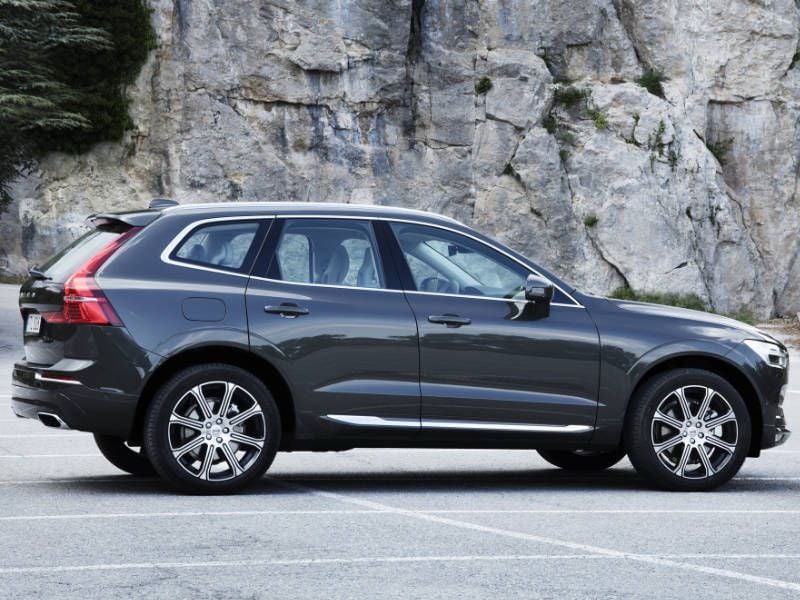
Photo by Volvo